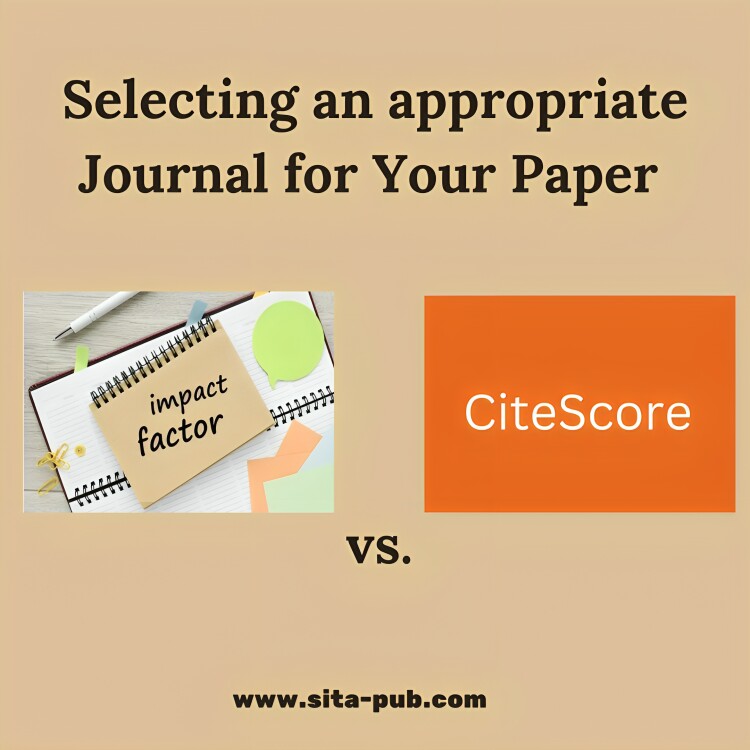Impact Factor vs. CiteScore: Selecting an appropriate Journal for Your Paper


When it comes to publishing your research, you must select the right journal. A good journal will help your work reach the right audience and increase your chances of being published. In this article, we will discuss two important journal metrics: Journal Impact Factor (JIF) and CiteScore. We will go over what they are and how they can help you choose the best journal for your research.
Journal Impact Factor is a number that shows how often articles in a journal are cited or referenced in other papers. It is created by Clarivate Analytics and is included in the Journal Citation Reports (JCR).
To calculate JIF, you take the number of times articles from the journal are cited in one year and divide it by the number of articles published in the previous two years. For example, if a journal has 100 articles and they received 300 citations in one year, the JIF would be 3.0.
JIF gives you a quick way to see how popular a journal is.
Journals with high JIF scores are usually well-respected, which can help your work get noticed.
JIF looks at only a two-year period. This might not show the true impact of research in fields where citations take longer to accumulate, like in the humanities.
It only counts certain types of articles, which may not reflect the journal's overall influence.
CiteScore is another metric that indicates how often a journal's articles are cited. Elsevier provides it for four years.
CiteScore is calculated by dividing the total number of citations for articles published in a journal over a four-year period by the number of articles published during that time. For example, if a journal publishes 200 articles and receives 800 citations, the CiteScore is 4.
CiteScore examines a longer time period (four years), which may be useful in fields where citations take longer.
It contains a variety of documents, including articles, reviews, and editorials, that provide a more complete picture of the journal's impact.
Some researchers may be less familiar with CiteScore than with JIF.
Because it includes various types of documents, it may not concentrate solely on original research.
In addition to JIF and CiteScore, you should be aware of the following metrics:
Scimago Journal Rank (SJR): This score is based on both the number and quality of citations. It prioritizes reputable journals. |
Source Normalized Impact per Paper (SNIP): SNIP accounts for the unique citation practices of different fields, allowing for a fair comparison across disciplines. |
Eigenfactor: This metric is similar to JIF, but it prioritizes citations from influential sources. |

Different fields of study may favor different metrics. JIF may be more important in rapidly changing fields such as medicine. CiteScore may be more appropriate in fields where citations take longer, such as humanities.
To assess journal quality, check if it is included in trusted databases such as Scopus, Web of Science, or Google Scholar. Journals from these databases are typically more credible.
When selecting journals for your research, consider recent articles in those journals. Check that they have published work similar to yours. This ensures that your research is appropriate for the journal.
Read the journal's submission guidelines carefully. This includes formatting guidelines, word limit, and the review process. Knowing this information can help you save time and effort.
Ultimately, choosing the appropriate journal for your research requires an understanding of CiteScore and the Journal Impact Factor. Together with elements like SJR, SNIP, and Eigenfactor, these metrics can help you identify a journal that complements your work and appeals to the right kind of readers. Choosing wisely will improve your academic profile and increase your chances of being published. We hope you have a great research journey and encourage you to take your time looking into your options! Remember that you deserve to be recognized for your efforts!
Are you looking for the perfect journals to publish your research?
We’re here to help! Simply send us your field of study, and we’ll provide you with a curated list of journals that align with your work.
If you have any questions, inquiries, or would like to learn more about our services, please don't hesitate to reach out to us. Our dedicated team is ready to assist you.